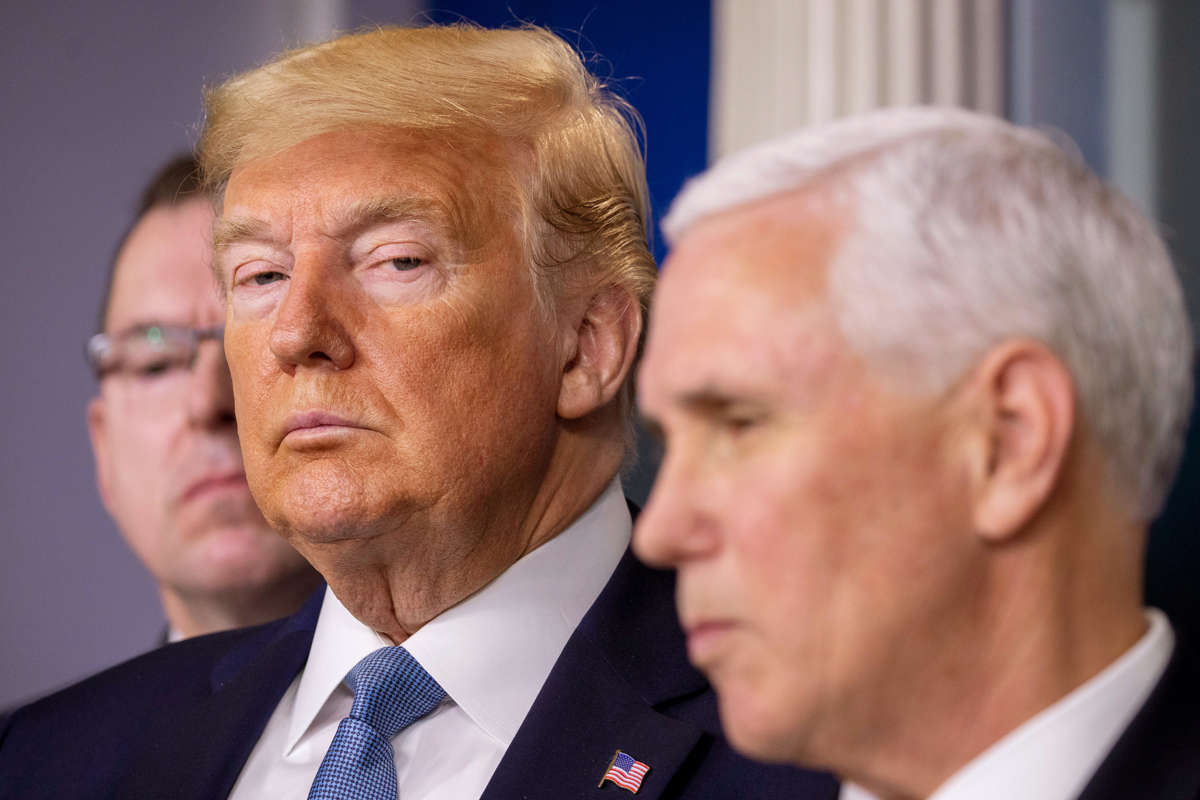A newly released memo, never seen by the public until this week, details how former President Donald Trump and his legal team had planned to convince then-Vice President Mike Pence to overturn the outcome of the 2020 presidential election.
Current President Joe Biden won that election with an Electoral College count of 306 votes to Trump’s 232. But a scheme hatched by John Eastman, a lawyer helping Trump devise ways to remain president after his loss, sought to discount seven states Biden had won in order to make Trump the victor.
A memo authored by Eastman was released this week as part of the promotional campaign for a new book about the final days of the Trump presidency titled Peril by Washington Post journalists Bob Woodward and Robert Costa. In his memo, Eastman explained how Trump and his allies could convince Pence to undo the election results, as part of his constitutional role as president of the Senate.
On January 6 — the day of the certification of Electoral College votes (as well as the day when a mob of Trump loyalists violently breached the Capitol building in an effort to disrupt that certification) — the memo suggested that Pence should begin the process of opening and counting ballots. When he reached Arizona, however, Eastman suggested he could announce that the state had sent in “multiple slates of electors” and that he would not count those votes until after he finished tallying the remainder of the Electoral College.
Pence would do the same with other states that had Republican state legislators send in alternative electors. Eventually, seven states in total, numbering 84 votes for Biden, would be deemed undetermined by the vice president. At this point, the memo argued that Pence could say he wouldn’t count those ballots and that the discrepancy couldn’t be resolved.
Although the suggested action by Pence would violate the Electoral Count Act, Eastman said it was okay because, in his opinion, the law was unconstitutional, a point that Trump could argue if the matter reached the courts.
By discounting those seven states, Pence could argue one of two things. First, he could say that Trump had won the majority of Electoral College votes that could be counted (Trump would still have his 232 votes in place, with Biden only attaining 222 votes because of the discounted seven states). And if Democrats in Congress challenged his edict, Pence could still help Trump out in a second way by saying that no candidate had attained the 270 Electoral College votes needed for an election victory.
That would result in the election being decided in the House of Representatives, with each state’s delegation of lawmakers receiving one vote. As it so happened, 26 state delegations were in Republicans’ control at the time of the certification, all but guaranteeing reelection for Trump.
This is the six-point plan advanced by Trump lawyer John Eastman for VP Pence to overturn the election on January 6th.https://t.co/IkgmEuCW8b pic.twitter.com/CXWTVY1LL7
— Christian Vanderbrouk 🇺🇸🇮🇱🇺🇦 (@UrbanAchievr) September 20, 2021
However, the plan was incumbent upon Pence going along with it — which he ultimately said he wouldn’t do — and claiming authority to violate the Electoral Count Act.
“The main thing here is that Pence should do this without asking for permission — either from a vote of the joint session or from the Court,” Eastman’s memo said. “Let the other side challenge his actions in court.”
In several parts of his memo, Eastman claimed that his actions had the backing of esteemed Harvard Law School professor Laurence Tribe, and that the scheme was something Tribe had imagined in the past a vice president could do. However, responding to news of the memo on Twitter, Tribe said Eastman’s postulations about the law professor’s views on how to game the Electoral College were falsely asserted.“This Eastman memo pretends to be based on my analysis but in fact takes snippets of my work wholly out of context and spins a totally fake web of ‘law’ that no halfway decent lawyer would take seriously,” Tribe wrote. “No wonder it couldn’t fool even Mike Pence.”
Our most important fundraising appeal of the year
December is the most critical time of year for Truthout, because our nonprofit news is funded almost entirely by individual donations from readers like you. So before you navigate away, we ask that you take just a second to support Truthout with a tax-deductible donation.
This year is a little different. We are up against a far-reaching, wide-scale attack on press freedom coming from the Trump administration. 2025 was a year of frightening censorship, news industry corporate consolidation, and worsening financial conditions for progressive nonprofits across the board.
We can only resist Trump’s agenda by cultivating a strong base of support. The right-wing mediasphere is funded comfortably by billionaire owners and venture capitalist philanthropists. At Truthout, we have you.
We’ve set an ambitious target for our year-end campaign — a goal of $250,000 to keep up our fight against authoritarianism in 2026. Please take a meaningful action in this fight: make a one-time or monthly donation to Truthout before December 31. If you have the means, please dig deep.
